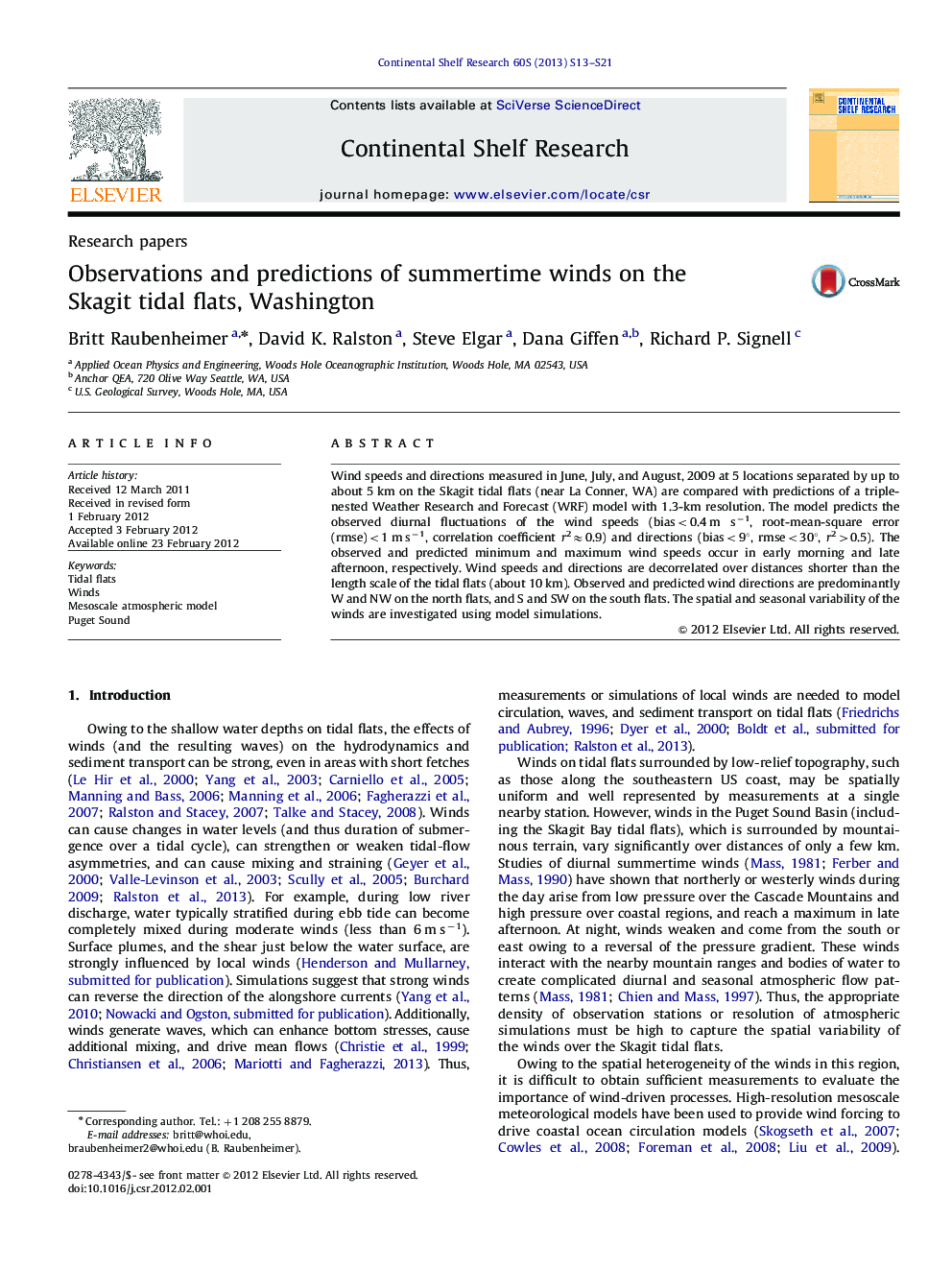| Article ID | Journal | Published Year | Pages | File Type |
|---|---|---|---|---|
| 4532154 | Continental Shelf Research | 2013 | 9 Pages |
Wind speeds and directions measured in June, July, and August, 2009 at 5 locations separated by up to about 5 km on the Skagit tidal flats (near La Conner, WA) are compared with predictions of a triple-nested Weather Research and Forecast (WRF) model with 1.3-km resolution. The model predicts the observed diurnal fluctuations of the wind speeds (bias<0.4 m s−1, root-mean-square error (rmse)<1 m s−1, correlation coefficient r2≈0.9) and directions (bias<9°, rmse<30°, r2>0.5). The observed and predicted minimum and maximum wind speeds occur in early morning and late afternoon, respectively. Wind speeds and directions are decorrelated over distances shorter than the length scale of the tidal flats (about 10 km). Observed and predicted wind directions are predominantly W and NW on the north flats, and S and SW on the south flats. The spatial and seasonal variability of the winds are investigated using model simulations.
► WRF model predicts the diurnal wind speeds, directions, and spatial patterns. ► Simulations suggest a separation zone forms when SW winds funnel through Saratoga Passage. ► Spatial correlation scales of the simulated wind field increase from summer to early winter.
